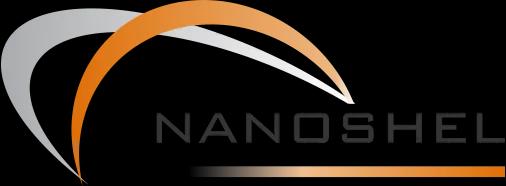Metal Nano Powder
Nickel Nanoparticle
(Ni, Purity: 99.9%, APS: 40-70nm)
Nickel Nanoparticle
Available Pack Size: 10Gms, 25Gms, 50Gms, 100Gms, 250Gms, 500Gms, 1Kg & Bulk orders

SEM - Nickel Nanoparticle

Particles Size Analysis - Ni Nanopowder
| Product | Nickel Nanoparticle | |
| Stock No | NS6130-01-138 | |
| CAS | 7440-02-0 | Confirm |
| Purity | 99.9% | Confirm |
| APS | 40-70 nm | Confirm |
| Molecular Formula | Ni | Confirm |
| Molecular Weight | 58.69 g/mol | Confirm |
| Form | Powder | Confirm |
| Color | Grey to Black | Confirm |
| Density | 8.9 g/cm³ | Confirm |
| Melting Point | 1455 °C | Confirm |
| Boiling Point | 2730 °C | Confirm |
| Solubility | Insoluble in water | |
| Quality Control | Each Lot of Nickel Nanoparticle was tested successfully | |
| Main Inspect Verifier | Manager QC | |
Typical Chemical Analysis
| Assay | 99.9% |
| Other Metal | 1000 ppm |
Expert Reviews
Nickel Nanoparticle: Pure native nickel is found in Earth’s crust only in tiny amounts, usually in ultramafic rocks. Nickel nanoparticles are transition metal particles and come in the size range of 10 – 40 nm (approx.). It is a black silvery lustrous metal powder which is hard and ductile in nature. Nickel nanoparticles can be alloyed by tungsten, molybdenum, chromium, iron and with other metals to form corrosion resistant alloys.
Nickel Nanoparticle: or nanopowder are black spherical high surface area particles. Nanoscale Nickel Particles are typically 10 – 40 nanometers (nm) with specific surface area (SSA) in the 30 – 50 m2/g range. A lot of different methods of synthesis of metal nanoparticles are known, namely, physical (sputtering or mechanical dispersion of bulk substances), chemical (reduction of metal ions in solutions under conditions favorable for the formation of small metal particles). Nickel nanoparticles are mostly synthesized by chemical reduction method.
Nickel Nanoparticle: Due to the enhanced optical properties of Nickel Nanoparticles, Quantum effect can be seen in these particles. They are electrically conductive and hence can be used for several applications. Nickel nanoparticles are also available as ultra high purity, passivated and dispersed forms. Metal nanoparticles of nickel, iron and cobalt are relatively difficult to synthesis because they easily get oxidized. Among them, nickel is the most stable particle. Nickel nanoparticles have important applications in catalysis and magnetic materials.
Nickel Nanoparticle: In the recent years, considerable attention has been devoted to the development of uniform nanometer-sized nickel nanoparticles because of their unique properties and potential applications in a variety of fields including electronics, magnetism, energy technology, or biomedicine. In comparison with the noble metals, nickel nanoparticles have been much less studied in catalysis, although they have found a particular application in the growth of carbon nanotubes as well as in a variety of organic reactions. The synthesis of nickel nanoparticles in the zero valence state is not trivial since they readily undergo oxidation, consequently affecting their catalytic performance.
Nickel Nanoparticle: The ultrafine and nanometer nickel powders have attracted a great deal of attention over past decades due to their specific properties such as magnetism, thermal resistance, chemical activity, high surface volume area, better reactivity, enhanced hardness, semiconductor conduction, and high chemical activity having a wide range of applications including batteries, hard alloy, catalyst, electricity etc. Nickel nanoparticles have some unexpected properties like its large surface and high activity; due to these properties nickel nanoparticles are used as efficient catalysts for chemical reactions such as hydrogenation and treatment of exhaust to reduce harmful chemicals. Also nickel nanoparticles are used as solid (rocket fuel) propellant which increases combustion heat, combustion efficiency and combusti
Nickel Nanoparticle
Contact Us:
Note
Nanoshel’s Product Categories Link:
Nickel Nanoparticle (Ni, Purity: 99.9%, APS: 40-70nm)
